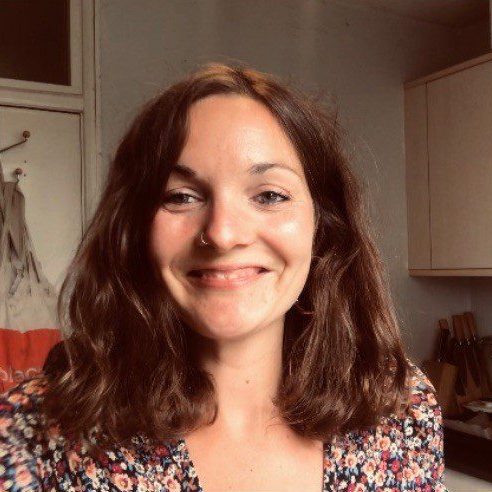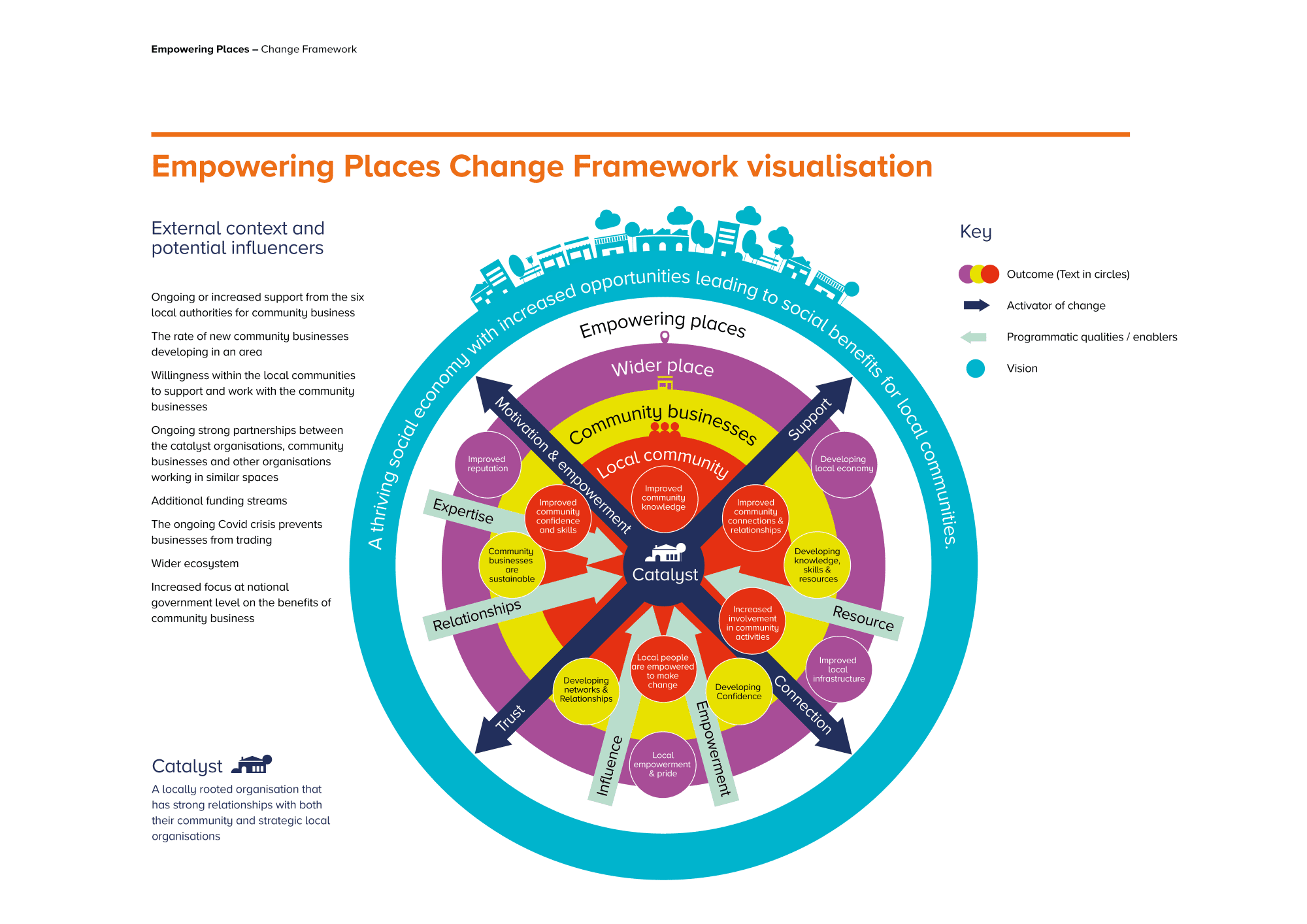
Lily O'Flynn
Senior Project Manager (place-based evaluations), Renaisi
As an evaluator whose specific focus is on place-based projects, I’m always keen to explore new ways of demystifying place-based change using visuals. Two years into the evaluation of Power to Change’s Empowering Places programme, whilst trying to retrofit new and emergent findings into a framework that was developed at the start of the programme, we decided to do exactly that. Mid-programme, we re-visualised the change of the Empowering Places programme using a more dynamic model.
A little bit about Empowering Places
Empowering Places aims to build the capacity of local organisations in six areas of high deprivation to ‘catalyse’ and support the growth of new community businesses, contributing to an overarching vision of more prosperous places, with more jobs and opportunities for local people.
Other Power to Change programmes rely on the motivation and appetite of people applying for support to start or develop their community business. But in its six areas, Empowering Places nurtures people with ideas, bolstering them with support and encouraging them to build their skills through the programme. However, in the context of high levels of deprivation where residents are likely to lack social capital and confidence (not to mention the impact of long periods of austerity and Covid), the ask is challenging.
Framework development
We noticed two key things that we felt were important to include in our new framework.
First, for change to happen, support had to come from the outside in as well as the inside out. From the outside in, the programme needed to provides money, expertise and the reputation of national organisations, and well as flexibility in how these were used. And from the inside out, locally funded organisations – the catalysts – needed to motivate and empower people, providing them with holistic, person-centered support. In addition to this, we noticed that external factors played a critical role in either enabling or restricting success, such as local authority support, the availability of additional funding, and the impact of Covid.
The second key factor was that change was happening at three levels:
- At a micro-community level, the programme was having an impact on individuals who benefited from the catalysts’ outreach as well as on the services provided by new businesses.
- At a community business level, businesses and the people running them were growing in skills, knowledge and confidence, creating more resources for and connections within their local place.
- At a macro wider place level, as the programme matured, we were beginning to see more connected ecosystems of businesses, charities and statutory agencies and a greater understanding of the benefits of community business.
The change framework below aims to illustrate this:

Our updated framework
In updating the framework, we hope it will support the organisations delivering the programme to progress and illustrate the context and impact of their activities. The framework can also support us as evaluators to understand emergent change and factors that have created it within the programme. And finally, it will support others setting out with similar aims to understand the conditions for change in a challenging environment and how to bring others with them on the journey.
Because each catalyst is operating within a unique context, and responding to unique challenges using resources and assets locally available to them, the activities, activators and outcomes outlined in the framework are not designed to be applicable to every place. Rather, it acts as a catch-all.
The key features are:
- It shows the process for change (‘activators’ or ‘enablers’ of change) as well as the change itself (outcomes) .
- It includes outcomes that have been achieved, and outcomes that are aspirational and assumed.
- The three levels are not hierarchal nor linear, and each level supports other levels to thrive.
Working as an evaluator on Empowering Places has been uniquely rewarding – it’s unusual that you are offered the flexibility to start again with a framework two-thirds of the way into a programme. But it makes sense.
What we’ve learnt over the course of doing various place-based evaluations is that, the shape of long-term change will never be clear from the outset. This is because change is driven from the ground up and necessarily encompasses the vision and aims of multiple people, partners, agencies coming together. Therefore, what’s more important at the outset is understanding the process for change, which assets and foundations are being built on, and what the mechanisms for change are, before establishing the change itself.
About Renaisi: Renaisi is a social enterprise that helps people and places to thrive. Founded in 1998 to regenerate deprived neighbourhoods in Hackney, East London, they support people to learn, work and connect with their community; help organisations across the UK to understand and evaluate their impact on communities; and develop collaborative strategies for improving places.
